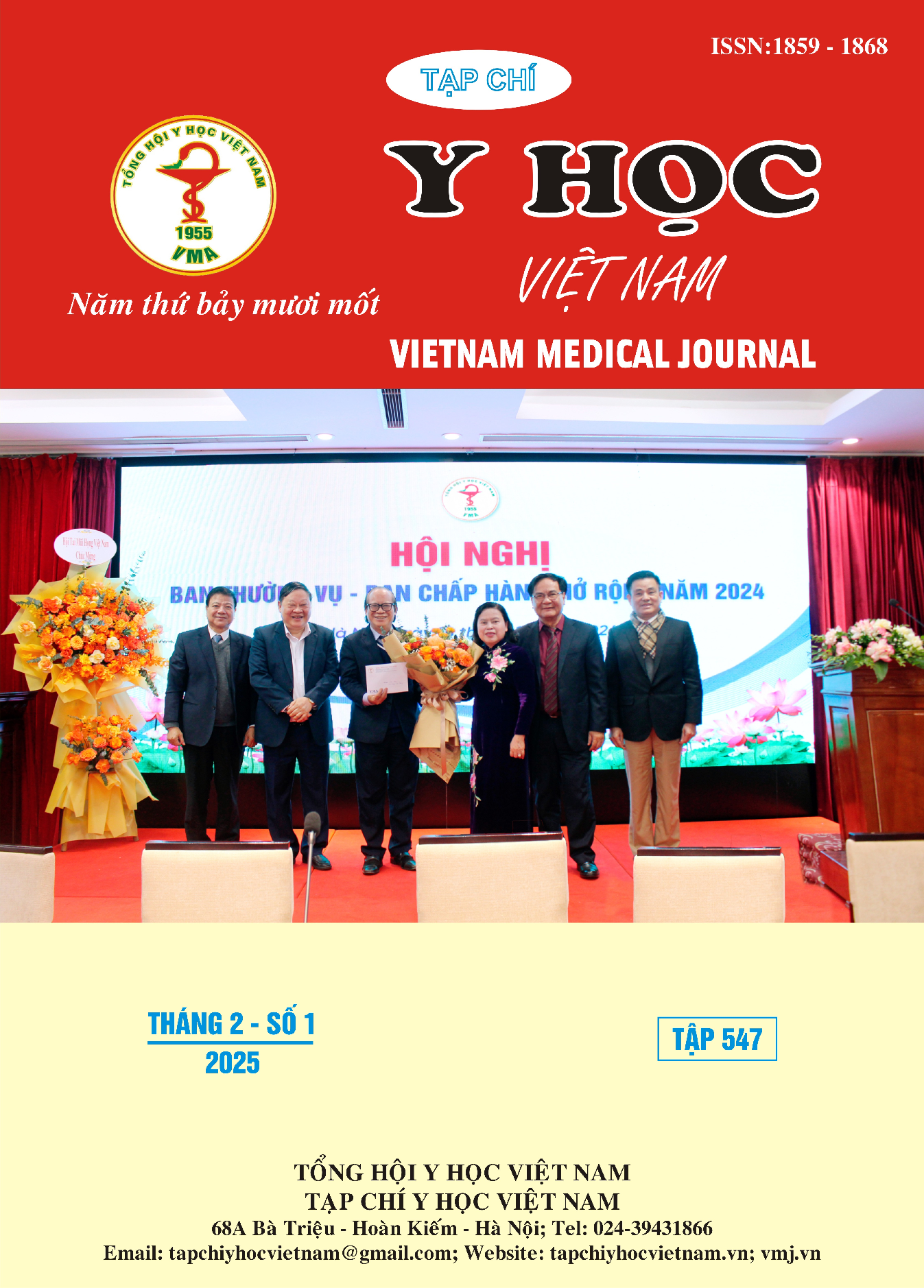VALUE OF QUANTITATIVE PERFUSION PARAMETERS ON 3 TESLA MRI IN BREAST CANCER DIAGNOSIS
Main Article Content
Abstract
Objective: analyze the value of quantitative perfusion parameter on 3 Tesla MRI in breast cancer diagnosis. Method: A cross-sectional descriptive study was conducted on 61 patients undergoing breast perfusion MRI at the Radiology Center of Bach Mai Hospital from January 2022 to June 2024. Measure the Ktrans, Kep, Ve, Maxslope, CER parameters, collect histopathological diagnosis results to classify benign and malignant lesions. Descriptive statistical analysis for the morphological characteristics of breast tumors on 3T MRI. Inferential statistics determine the diagnostic value of perfusion parameters to differentiate benign and malignant lesions. Results: 61 cases of breast tumors underwent perfusion MRI and biopsy for pathological diagnosis, including 50 malignant lesions and 11 benign lesions. The Ktrans, Kep, and Maxslope parameters are capable of distinguishing benign from malignant lesions. The results of the analysis of the area under the ROC curve are 0.896; 0.958; 0.819, respectively, compared to the area under the curve of 0.798 when qualitatively analyzing the type the dynamic curve. Conclusion: The Ktrans, Kep, and Maxslope parameters on perfusion MRI are capable of discrimination between malignant and benign breast lesions. Quantitative analysis of perfusion parameters has a higher diagnostic value than qualitative analysis of the type of the dynamic curve.
Article Details
Keywords
breast cancer, perfusion MRI, ultrafast sequences, quantitative analysis, Ktrans
References
2. Amarnath J, Sangeeta T, Mehta SB. Role of quantitative pharmacokinetic parameter (transfer constant: Ktrans) in the characterization of breast lesions on MRI. Indian J Radiol Imaging. 2013; 23(1):19-25. doi:10.4103/0971-3026. 113614
3. Kang SR, Kim HW, Kim HS. Evaluating the Relationship Between Dynamic Contrast-Enhanced MRI (DCE-MRI) Parameters and Pathological Characteristics in Breast Cancer. Journal of Magnetic Resonance Imaging. 2020;52(5):1360-1373. doi:10.1002/jmri.27241
4. Thakran S, Gupta PK, Kabra V, et al. Characterization of breast lesion using T1-perfusion magnetic resonance imaging: Qualitative vs. quantitative analysis. Diagnostic and Interventional Imaging. 2018;99(10):633-642. doi:10.1016/j.diii.2018.05.006
5. Yi B, Kang DK, Yoon D, et al. Is there any correlation between model-based perfusion parameters and model-free parameters of time-signal intensity curve on dynamic contrast enhanced MRI in breast cancer patients? Eur Radiol. 2014;24(5): 1089-1096. doi:10.1007/ s00330-014-3100-6
6. Travis RC, Key TJ. Oestrogen exposure and breast cancer risk. Breast Cancer Research : BCR. 2003;5(5):239. doi:10.1186/bcr628
7. Honda M, Kataoka M, Onishi N, et al. New parameters of ultrafast dynamic contrast‐enhanced breast MRI using compressed sensing. Magnetic Resonance Imaging. 2020; 51(1):164-174. doi:10.1002/jmri.26838
8. American College of Radiology BI-RADS Committee. ACR BI-RADS Atlas: Breast Imaging Reporting and Data System. 5th ed. American College of Radiology; 2013.
9. Oldrini G, Fedida B, Poujol J, et al. Abbreviated breast magnetic resonance protocol: Value of high-resolution temporal dynamic sequence to improve lesion characterization. European Journal of Radiology. 2017;95:177-185. doi:10.1016/j.ejrad.2017.07.025
10. Mann RM, Mus RD, van Zelst J, Geppert C, Karssemeijer N, Platel B. A Novel Approach to Contrast-Enhanced Breast Magnetic Resonance Imaging for Screening: High-Resolution Ultrafast Dynamic Imaging. Investigative Radiology. 2014; 49(9):579. doi:10.1097/RLI. 0000000000000057


